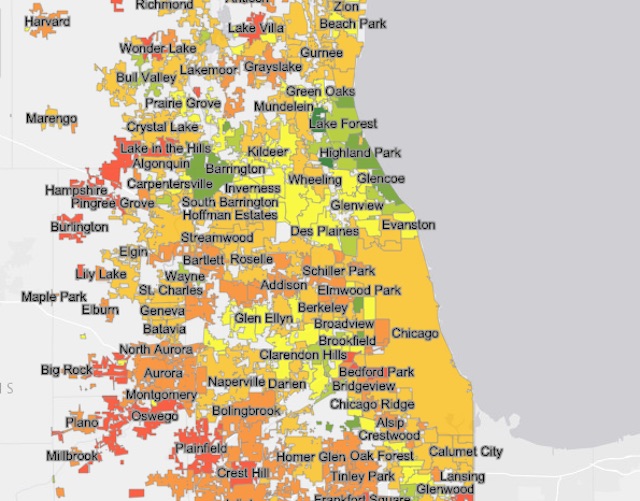The Surprising Link Between Crime, Quality Of Life & Trees. (Yes, Trees)
By Emma G. Gallegos in News on Aug 14, 2017 8:40PM
When discussing infrastructure and how it might impact, say, health, poverty or the economy, there's often a lot of attention paid to man-made things like streets, sidewalk, transportation or buildings. The Chicago Region Trees Initiative asks Chicagoans to look up and consider the vastly underrated role of trees.
There are some obvious ways that trees make life better: they offer shade (which reduces heating bills), they clean up the air and water, they prevent flooding and generally they just make an area feel nicer. That last one sounds a little touchy-feely, but there's research showing that trees can actually help to reduce crime and improve the quality of life for people who spend time around them, according to Atlas Obscura. That's why the Chicago Regional Tree Initiative and Morton Arboretum thought it was important to survey the canopy around the Chicago area. So while the federal government was counting the number of people in 2010, the CRTI was conducting a tree census.
They found that the Chicago area had over 157 million trees. Trees and shrubs cover 21 percent of the region, and those trees mostly included European buckthorn, green ash, box elder, black cherry, and American elm. They estimated the value of the trees at $51.2 billion. It's strange to think about trees in this way, but that takes into account the way they clean the air, reduce energy costs and raise property values.
The CRTI advocates for a healthier urban forest, and the census shows exactly where more trees could be planted. The census found that Cook County itself has 28 percent canopy cover and, based on the land available, could increase that up to 74 percent.
The canopy isn't distributed evenly, and the tree census revealed yet another way of looking at inequality in Chicago. The North Shore had a canopy cover that was over 40 percent in some places, while poorer communities of the South Side were as low as 7 percent. It can be tough to tease out causation and correlation but it turns out there is a connection between a lack of trees and crime.
"We started to look at where we have heavy crime, and whether there was a correlation with tree canopy, and often, there is," Lydia Scott, director of the CRTI, told Atlas Obscura. "Communities that have higher tree population have lower crime. Areas where trees are prevalent, people tend to be outside, mingling, enjoying their community."
One group based out of Woodlawn has already jumped on the tree bandwagon: BiG, which stands for Blacks in Green. Over the last few months, they've been hosting tree inventories in West Woodlawn, which is aiming to be "America's first certified African American community arboretum."
BiG hopes to provide horticulture scholarships and jobs to the local community. Caring for the trees will improve the neighborhood, bring the community together, help it withstand climate change and even provide food through fruit and nut trees.
BiG's founder Naomi Davis told Chicago Magazine, "The green movement is the closest thing to a silver bullet that the African American community is going to see in many lifetimes."
